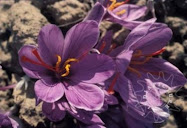Tuesday, January 13, 2009
Kashmir Cultural Heritage ---IV
In about 1319 AD in Sehadeva’s reign a ferocious warrior Zulqadar Khan also called Dulchu invaded Kashmir with a huge force and the king fled for his life leaving the state in charge of the chief of his army Ramchandra besides the invader. Dulchu and his men created havoc by killing people mercilessly and breaking considerably the Hindu kingdom. Rinchana, a fugitive Buddhist prince from Ladakh who was given shelter by Sehadeva treacherously rose in revolt, killed Ramchandra and proclaimed himself the king. He also got Sahadeva killed and married Ramachandra’s daughter Kota Rani. He sincerely wished to convert to Hinduism but was opposed by the orthodox Brahmins of the valley. This infuriated Rinchana, he converted to Islam along with all the nobles in the court and took the name Saddruddin . He ruled for three years and it is said that most of the Buddhists in the valley also converted to Islam under his influence and almost all their monasteries were converted to mosques. Thus the Hindu Kashmir began losing her sheen though there was still the majority of Hindus. The worst blow came immediately after with the establishment of Shahmiri Sultanate with Shah Mir as King when hordes of missionaries, mostly Sayyids from Persia entered this land propagating Mohammedanism with full force and fury. In Quttubuddin’s rule Syed Ali Hamadani came to Kashmir first time in 1373 with 700 Sayyeds. They were received with all respect and posted at different important places to propagate Islam in the valley. Shah Hamadan is credited to have converted about forty thousand Brahmins to Islam. After Quttubuddin his son Sikander rose to power in a tender age. His minister Seha Bhat, a recent convert to Islam was all powerful. He left no stone unturned to Islamize Kashmir. He used all force to convert not only the people but almost all important religious installations of Hindus. It is said not a single village or town was left where the Hindu traces were not destroyed or converted. Sikandar is named butshikan (iconoclast) for his breaking of thousands of Hindu temples in Kashmir. His rule is considered to be the darkest period for the Hindus of Kashmir. After his death in about 1420 his son Ali Shah ascended the throne and he committed much more atrocities on the remaining Brahmins so much so that only eleven Hindu families remained in the valley and the rest converted, got killed or fled for their lives. ------ (to be continued)
Subscribe to:
Post Comments (Atom)
.jpg)




No comments:
Post a Comment